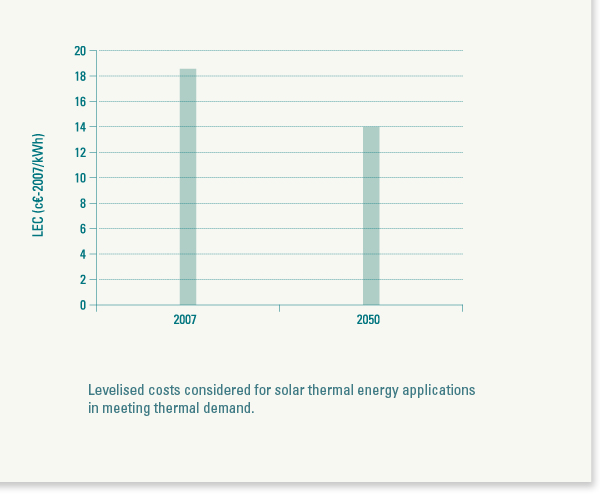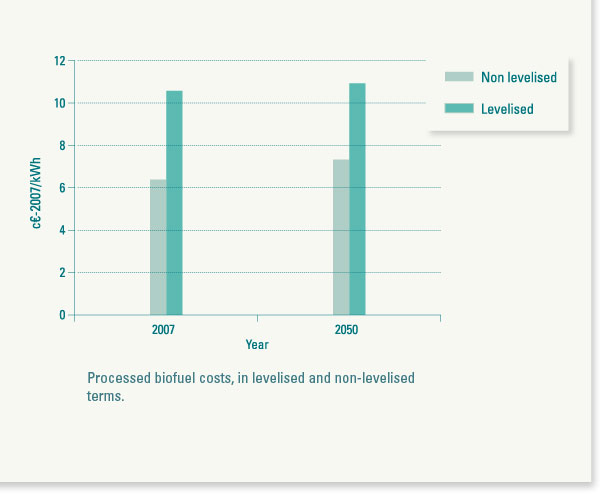Solar thermal, biomass and biofuels also contribute in covering energy consumption in both scenarios. The figure shows the levelised costs considered for solar thermal energy in the extreme years of the period of time considered. Regarding biomass, incremental inflation effects have been incorporated due to expected increasing demand for this resource that, despite being renewable, is relatively scarce and has many potential applications.
In the case of processed biofuels, a single cost scenario has been used for all of them, representing the average. The scenario starts from the costs of the raw materials, the standard transformation performance and the costs of processing. It takes into account incremental inflation due to the rising demand that can be expected on these limited resources.




